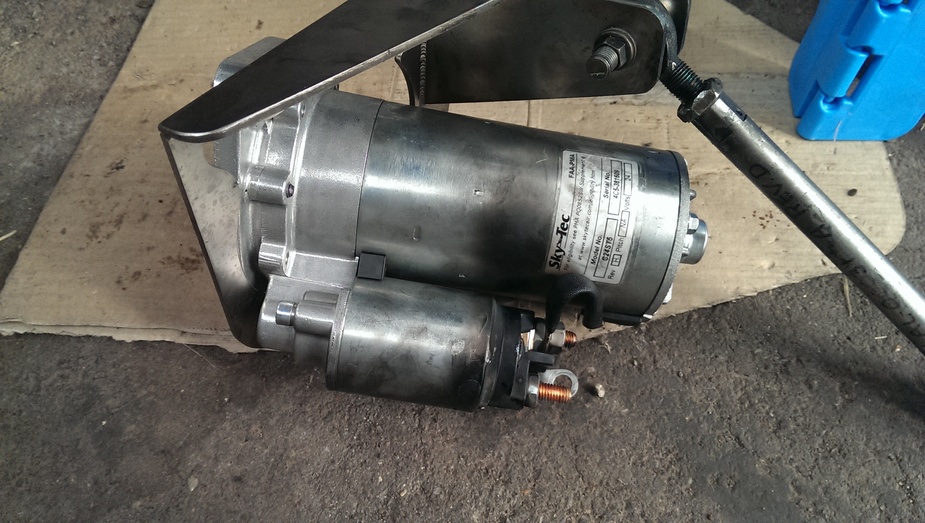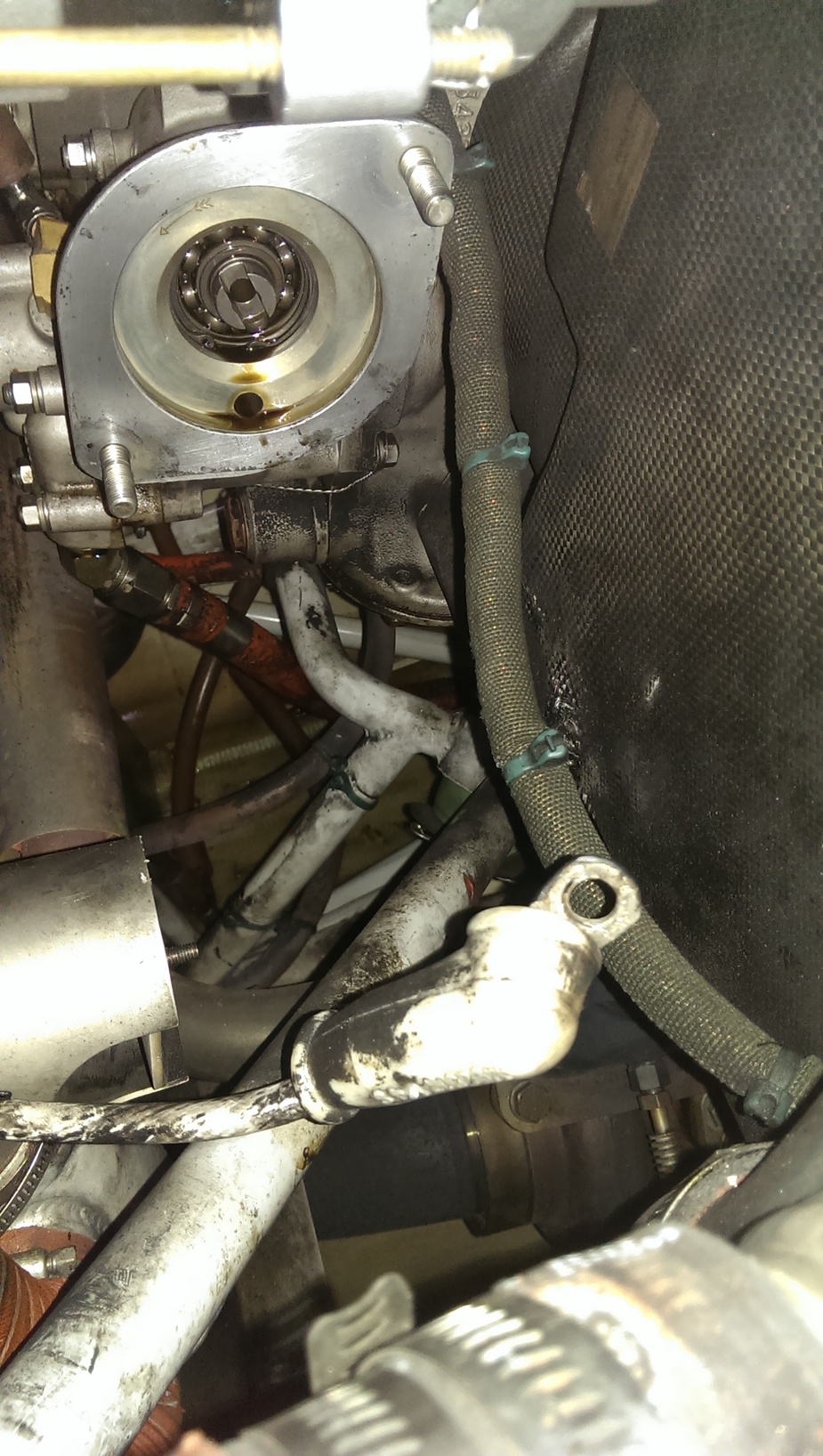I missed an impromptu fly-in to Chaumont in France last Sunday because my new (50 hrs since May) Skytec ST5 decided to pack up the previous day.
The plane was just out from annual and I had flown it the 30 minutes block-block from LFPN to LFPT. The next day I wanted to test the GNS430 upgraded to W. Before the flight I spent quite a bit of time on the ground to perform the various ground tests of the GNS430. Then I flew from from Pontoise to Rouen and did a few approaches, ILS, RNAV and stopped for lunch. After lunch I flew to Toussus to have the ELT re-installed. Then I botched the hot engine start by not being quick enough on the mixture, so the engine started and then stopped again. I left the fuel pump on to cool down the fuel system by circulating fuel from the tank and back, tried again… On the 4th attempt the noise of the starter suddenly changed and it started cranking noticeably slower. I managed to start and fly back to Pontoise, but after having fueled in preparation for the next day’s flight, I could not start. The engine would hardly turn over when engaging the starter.
Today Michael came over to take the starter off and here is what we found.



On the last photo, the starter solenoid was in the 4-5 O’clock position, close to the carbon baffle. There has obviously been quite a bit of heat generated. The question is why.
I do not think I abused the starter. I did not crank excessively. I let the starter cool off quite a bit between each attempt, not the least to run the fuel pump and let it get a chance to eliminate any vapor from the fuel lines.
The reason I chose the Skytec starter when I repaired the starter adapter on my Continental TSIO550-C and decided to replace the Iskra starter last May, was weight. There were basically just two starters to choose from; Skytec or the full-size Energizer starter which is at least twice the weight of the Skytec. And on my airplane, weight is a preoccupation given all the hardware which is installed.
Now I need to decide whether to stay with a Skytec or change to the Energizer. I suppose that this will to a big extent depend on what the guys at Hartzell say is the cause of this failure. What I am slightly worried about is that the solenoid is very close to the carbon baffle which is somewhat burned by the heat. There is some question about whether there has been some chafing of the solenoid against the carbon baffle, and that could have caused an electric arc. Given the chain of events, i.e. that there was a very sudden change to how the starter worked, I doubt there was an external cause (chafing) to the failure.
The Skytec starters are not heavy duty, they are small and crank fast but that comes at a price.
From the pictures it looks like the Solenoid was the cause. The starter motor could still be OK.
What is the source of the black stuff?
Peter wrote:
What is the source of the black stuff?
The black stuff appears to be carbon dust from the baffling and there is also blackening on the starter/solenoid that appears to be soot from burning or smoldering.
I believe that the solenoid was rubbing hard on the carbon fibre baffling to the point where it started shorting the current when the starter was energized.
For this to happen, the carbon fibre needs to be conductive, so the question is just how conductive is carbon fibre ?
Well it seems that carbon fibre is a very good conductor as long as it is not insulated with resin coating.
So clearly this is a simple case of the solenoid power stud shorting to the baffle material.
Eyeopening… There was not much clearance between the starter solenoid and the baffling so I guess some of the carbon was chafed and small threads shorted the stud to the body of the solenoid.
Question now is whether I fit the bigger Energizer starter which I can install in such a way that the power lead connects in the 9 O’clock position, or try to insulate or create a bigger gap between the baffling and the stud.
Get a new solenoid and install back the started with proper insulation. It should have been properly insulated in the first place.
What concerns me is that the lack of a gap would have been blindingly obvious at installation time. One however sees this a lot on planes … a hose rubbing against something, etc.
From the pics it isn’t clear to me that there was a short from the starter motor stud (which looks clean) to something. And that assumes the stud is always energised, not just during starting.
You may have to modify the other part, to achieve a clearance.
My starter is also in contact with the baffling — to seal the air gap as it is a Lycoming style. However with silicone baffling, conductivity is not an issue. I can understand why the installer didn’t take care about this. Not sure that a conductor is a smart choice for baffling.
There are one or two skytec starters that I think are known to have issues. Often particularly pronounced with light props. I’ve head that the hartzell starter is a lot more robust. and better designed to cope with kickback.
Live posts near carbon matting looks very questionable though if there was a reasonable chance of contact.